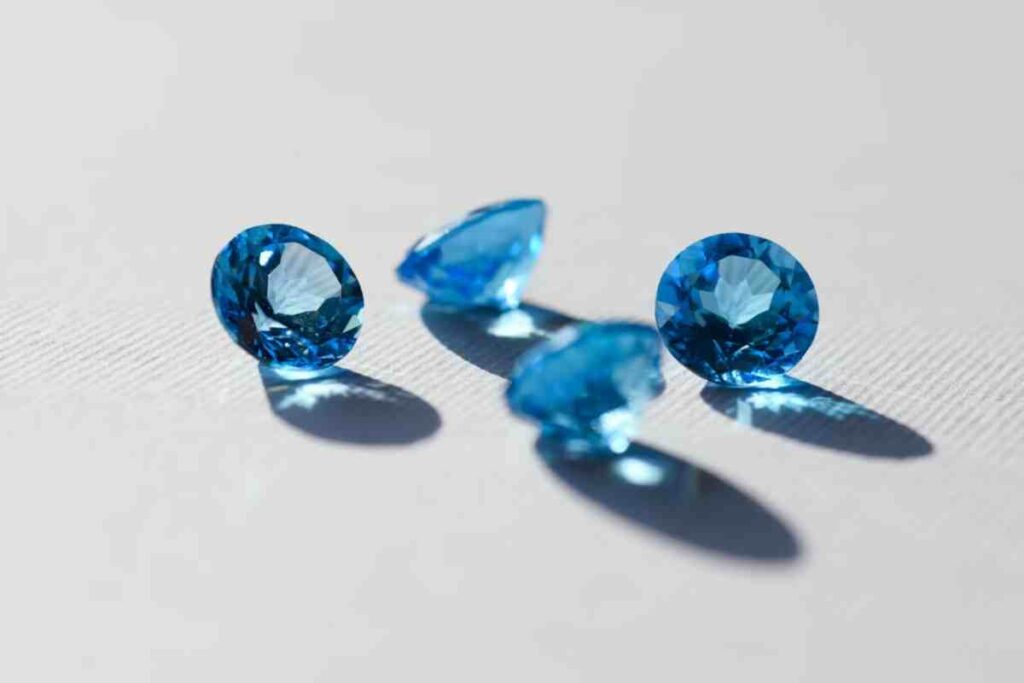The gemstone industry just got turned inside out. Five years ago, nobody at a jewelry counter asked about blockchain certificates or AI verification. Now? It’s the first question for half the customers walking in. This isn’t just about pretty rocks anymore. It’s about knowing exactly where that rock came from, who touched it, and whether anyone got hurt bringing it to market. Technology crashed into the jewelry world, and suddenly everything we thought we knew about value and authenticity needs rethinking.
How AI Changed the Trust Game
Here’s where things get wild. Scientists can now point a spectrometer at a ruby and tell you which region it came from. They’re using the same AI that reads medical scans to analyze tiny mineral inclusions inside stones. Each mine leaves a fingerprint, basically. Invisible to your eye but clear as day to the machines.
This tech killed the sketchy middle market overnight. Those dealers who’d swear their stones were “probably from Burma” or “definitely not from conflict zones”? They’re done. Either you have proof or you don’t.
The blockchain part sounds complicated but it’s actually simple. Every time a stone changes hands, it gets logged. From the miner to the cutter to a jeweller like Best Brilliance to your finger. The whole journey lives on a permanent record that anybody can check.
The Lab Revolution Nobody Saw Coming
Lab-grown gemstones flipped the script completely. We’re not talking about fake stones here. These are real sapphires, real emeralds, real rubies. The same atoms are arranged the same way. The only difference? One took millions of years underground. The other took six weeks in a machine.
The color range from labs is seriously impressive too. Natural padparadscha sapphires (that peachy-pink color) cost more than cars. Lab versions? A few hundred bucks. Suddenly regular people can own colors that used to be reserved for royalty. Some lab stones are actually better than natural ones. Fewer inclusions, more consistent color, more durable for daily wear.
When “Real” Stops Meaning What You Think
Let’s get philosophical for a second. What makes a gemstone real? The fact that it came from the ground? Or the fact that it has specific chemical properties? Because if it’s the second one, then lab stones are just as real as mined ones. Maybe more real, since they’re often purer.
Young buyers don’t care about this debate. They see identical stones with wildly different prices and make the obvious choice. They want the look, the durability, the beauty. The origin story is becoming less important than the ethics story. Would you rather have a natural stone with questionable history or a lab stone with perfect documentation?
Color Trends Going Somewhere New
Traditional gemstone colors are old news. Now, people are hunting for teal sapphires, peach sapphires, salt-and-pepper diamonds. Stones with personality instead of perfection.
This change makes sense when everybody’s Instagram feed looks the same. You want something nobody else has. Lab technology makes this possible at scale. They can tweak the growing conditions to produce exact colors. Want a sapphire that matches your husband’s eyes? They can probably make that happen.
The really interesting part is how natural stone dealers are responding. They’re not fighting the lab market anymore. Instead, they’re leaning into what makes natural stones unique. The inclusions become features, not flaws. The weird colors become selling points. It’s like when vinyl came back despite digital music being technically superior. Sometimes the imperfections are the whole point.
FAQs
Can AI really identify where a natural gemstone came from?
Yes, absolutely. The technology reads microscopic inclusions and trace elements unique to each mining location. It’s like a fingerprint for stones.
Are lab-created gems actually identical to natural ones?
Chemically and physically, yes. They have the same hardness, same refractive index, same everything. The only difference is origin and age.
Do lab gemstones hold their value?
Currently, lab stones have lower resale value than natural ones. But that’s changing as acceptance grows. Remember, diamonds had terrible resale value until De Beers created the secondary market. Lab stones might follow a similar path.
How long does it take to grow a lab gemstone?
Depends on the stone and size. Small sapphires take about two weeks. Larger emeralds might need two months. Compare that to millions of years in nature. The speed is actually the easy part. Getting the color right is what takes skill.
Final Thoughts
The gemstone world is splitting into two camps, and both are winning. Natural stones become even more special because they’re rare and unique. Lab stones become the everyday luxury that normal people can actually afford and enjoy. It’s not about one replacing the other. It’s about having options that didn’t exist before.
Think about what you actually want from a gemstone. The ancient story? The perfect color? The clean conscience? The investment value? Once you know that, the choice gets easier. Technology didn’t kill the magic of gemstones. It just gave us new kinds of magic to choose from.


